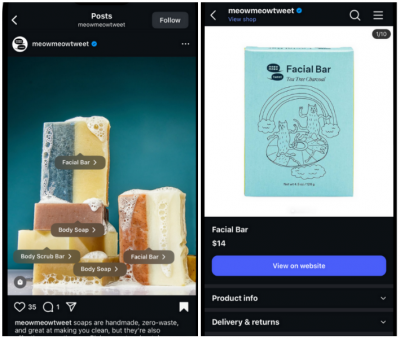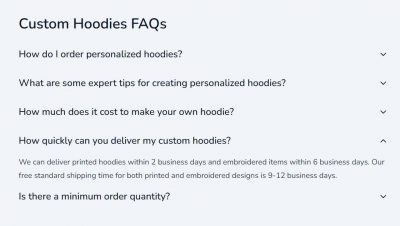When 96% of small brands are posting, tagging, and hashtagging their way through social media every minute of every day, is there really room for everyone to grow?
Let’s be honest—not really. The social media e-commerce space is bursting at the seams, and with social commerce projected to top $1 trillion by 2028, the competition is only getting louder.
Don’t get us wrong, social media is fantastic for discovery, visibility, and building that initial buzz. It should remain in your strategic marketing toolkit. But with algorithms that increasingly favor paid content and big creators, smaller brands are left to fight for scraps of organic reach.
The good news? You don’t have to play by their rules! There are ways to grow your e-commerce brand beyond social media.
In this guide, we’ll show you how to build your own marketing ecosystem that encourages sustainable growth and gives you complete control over the customer journey. If you’re interested, stay tuned.
The Social Media Ceiling
Nowadays, it’s extremely easy to start an e-commerce business on social media. Big platforms like Instagram, Facebook, and TikTok have built-in shopping tools that allow followers to buy from the app while watching your content.
It has never been easier to combine shopping and entertainment in one pleasurable experience.

But relying solely on social media is limiting because you are building your business on rented land. You have no true control over what happens with your content, and you can’t build deep, direct customer relationships.
Your followers and their contact information are owned by the platform (Meta, TikTok, etc.), not your brand. If your account is suspended, banned, or the platform shuts down (remember Vine?), you lose your entire audience overnight.
And things don’t stop here. You are at the mercy of the platform’s Terms of Service, content moderation rules, and platform features. You cannot control the checkout experience, the presentation of your brand, or the data you collect.
So, what’s there to do?
Own your audience!
Well, not in the sense that you’ll actually own them, but in the sense that you own the channels used for communication and presentation. Something like a dedicated e-commerce site, a blog, or even a landing page is several degrees of magnitude better because of the level of control it offers.
These are the so-called non-social channels that you have to design and build from scratch. Then, you use social media, SEO, and other tools to bring people to your online store.
The Best Non-Social Channels for E-Commerce
Each brand is different, but if you’re trying to set the grounds for a future e-commerce empire, you’ll need a combination of non-social channels and systems.
Here’s what marketing experts recommend:
- E-commerce website/storefront: This is your primary hub. You control the user experience, design, pricing, checkout, and all the conversion paths.
- Email list: The single most valuable asset. Once someone subscribes, you can reach them for essentially zero cost, forever (or until they unsubscribe).
- SMS/text message list: A highly effective, personal, and near-instant channel for promotions and notifications.
- Customer database (CRM): The system that stores rich first-party data on purchase history, preferences, and lifetime value.
- Blog/content hub: Content optimized for Search Engine Optimization (SEO) that drives free, high-intent organic traffic.
Yes, it takes more time and money to get either of these off the ground than to set up a shop on Facebook or TikTok. However, the result is worth the investment. Social commerce is only low-cost in the beginning, but it becomes expensive to maintain.
A sustainable e-commerce growth strategy is built on first-party data, such as which pages they viewed, what was in their abandoned cart, and their exact purchase history. Social media platforms don’t give you that.
Plus, with today’s amazing tools, you can do a lot of the work in-house. For instance, your team can use Pixpa’s no-code website builder to whip up a professional-looking online home for your brand. You’ll find a wide range of website templates fit for different e-commerce and creative pursuits.
Tips to Grow Your E-Commerce Brand Beyond Social Media
Hey, we get it. The transition from a social-heavy reliance to a diversified, owned growth strategy is tough. But it’s not impossible. You just have to know how to get things rolling in the other direction.
Here are a few tips to include in your growth strategy:
Position Your Brand as an Authority
Whether you sell a product or service, people would trust your brand even more if you share your wisdom, not simply bombard them with “Buy Now” or “Hire Me.”
Here’s what you can do instead:
Blog Your Way to Success
Create a personal blog or add one to your e-commerce website (if you haven’t already) and publish value-creating content to educate your target audience.
Pro tip: Write blog posts that would answer your customers’ “How to” or “What’s the best” questions or share X lists (X mistakes, tips, ways, etc.).
Let’s take the realm of finance content—there’s no shortage of educational content you can create in this niche. Freedom Debt Relief, a company that offers debt relief services, educates clients by sharing financial guides and tips, such as “How to Read Your Credit Card Statement” and “10 Ways to Clean Up Your Finances.”
Big Shoes, on the other hand, offers tips on shoe care, which shoes are best for different activities, sizing, and more.

Answer Questions Before Customers Ask Them
Another way to show you know what you’re talking about is to add FAQ pages for each of your products or services. You provide quick, easy-to-understand answers to common questions, reduce the load on customer support, and build trust with customers—all in one move.
Look at this site that offers hoodie printing services. Besides listing hoodies, it also answers common customer questions about the service and the finished product. It’s a win-win for both the seller and the buyer.

Dominate Long-Tail SEO with Expert Content Hubs
To tie everything together, focus on long-tail keywords that capture customers before they even know the product name. These are the highly detailed, in-depth “Ultimate Guides” that address specific problems your products solve.
Say you sell specialized coffee gear. Guides like “The Ultimate Troubleshooting Guide for Espresso Machine Pressure” or “How to Choose the Right Burr Grinder for Pour-Over” will soon start attracting new customers.
Pay Attention to Your Competitors
Why not get some inspiration from the ones who have already gone beyond social media?
Just be careful—you don’t want to copy. Your goal is to observe and study.
Start with SEO insights. Figure out what keywords your competitors add to their website to rank higher in Google’s search results, or what web pages exactly drive the highest traffic.
Let’s imagine that you’re a professional photographer from Charlotte, North Carolina. Using a free competitor analysis tool, you can see what specific competitors are doing. Results show that the competition is optimizing for local SEO in the photography business, using keywords like “photo shoot Charlotte NC” or “Charlotte newborn photographer.”

Analyzing your competition’s approach is a great way to discover new keywords and SEO strategies that have already been tested in your niche.
Don’t Give Up on Social Media
Social media remains a powerful force that puts your brand in front of people. So no, you shouldn’t give it up entirely. Just change the way you’re using it.
Instead of using these platforms as your main sales driver, treat them as channels for building brand trust and nurturing your audience.
Here’s how to do that:
- Establish connections between followers and brand: Buyers check social media for recent activity and proof before buying. A neglected profile, or one full of unanswered messages, kills conversion.
- Build your email list: Make your single, most prominent CTA across all social platforms to join your email list, not to buy a product. This way, you convert a fickle social follower into an owned subscriber. It’s a great way to de-risk your business from algorithm changes.
- Focus on one platform and one content type: Instead of being mediocre everywhere, choose one platform and one content format that naturally showcases your product’s value and use case. For instance, handmade goods are easy to promote on Instagram or TikTok via short “How it’s made” videos.
Don’t make social media your main and only point of sale. Make it your brand storyteller and community manager, and let your website and email do the heavy lifting of sales.
Prepare for Growth
In the digital world, growth rarely tiptoes in—it erupts. When your brand hits the right note online, visibility doesn’t trickle; it explodes. Suddenly, millions of eyes are on you, orders flood in, and your notifications turn into a full-blown symphony.
All it takes is one good week for your entire business to flip from quiet ambition to chaos.
When things change, it’s easy to lose control and get the rug swept from right under your feet. It’s not uncommon to run out of stock, experience shipping delays, or have your customer service team break down.
To avoid all of these, you have to plan for success from the very beginning. When you build your online store, make sure to integrate automated features, such as:
- Inventory tracking and low-stock notifications.
- Order placement for out-of-stock items to avoid missed sales.
- Order tracking in real time.
- Integration with your bookkeeping system to automatically update invoices and statements.
- Automated reminder emails to nudge customers who leave items in the cart.
- Smart chatbots that use your database to answer simple questions.
Extra tip: Many businesses hire virtual assistants to handle time-intensive tasks that can’t be fully automated. The actual virtual assistant costs vary depending on factors like experience level, location, and the scope of tasks, but it’s way more cost-effective than hiring an entire local team.
Key Takeaway
Everyone working in social media must be aware that they’re on borrowed land, and the algorithm is a fickle landlord. Real, lasting growth happens when you invest in your own digital real estate.
Your website, your content, and your email list are where true brand equity lives. Build there, nurture your audience directly, and you’ll create a business that grows on your terms—steady, sustainable, and untouchable.

